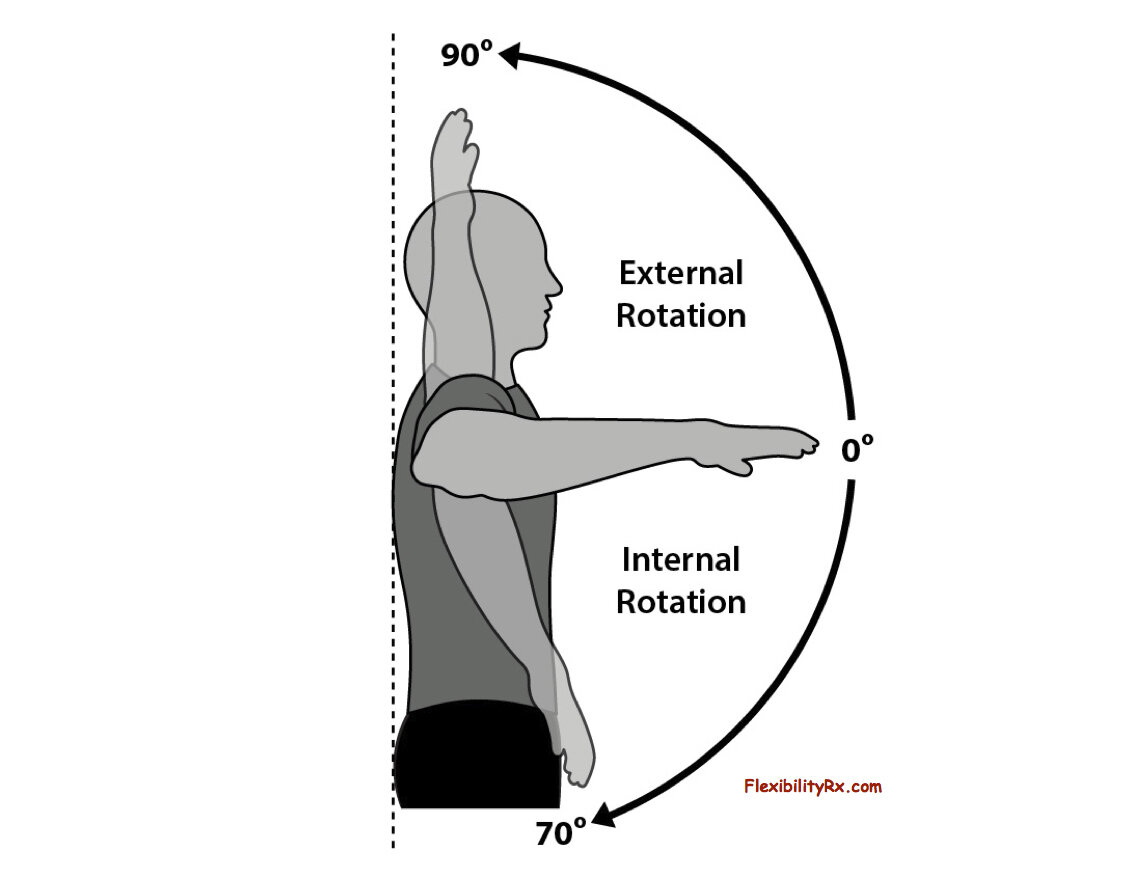Your Cart is Empty

কখনও একটি শেল্ফে উচ্চ কিছুর জন্য পৌঁছান, শুধুমাত্র আপনার কাঁধে একটি তীব্র ব্যথা বা নিবিড়তা যা আপনার নড়াচড়া সীমিত করে? হঠাৎ পোশাক পরতে বা চুল আঁচড়াতে কষ্ট হচ্ছে? এগুলি হিমায়িত কাঁধের লক্ষণ হতে পারে, এমন একটি অবস্থা যা আপনার কাঁধের জয়েন্টের গতিশীলতাকে উল্লেখযোগ্যভাবে সীমাবদ্ধ করে।
কাঁধে এই ব্যথার মুখোমুখি হওয়া অবিশ্বাস্যভাবে হতাশাজনক হতে পারে। সহজ কাজগুলি আপনি একবার চিন্তা ছাড়াই সম্পাদন করা কঠিন হয়ে উঠতে পারে। আমি জানি আপনি এখন কি ভাবছেন। কিভাবে এই যন্ত্রণা থেকে মুক্তি পাবেন, তাই না?
চিল! এই ব্লগ পোস্টটি আপনার উদ্বেগের সমাধান করতে এবং হিমায়িত কাঁধের জন্য একটি বিস্তৃত নির্দেশিকা প্রদান করতে এখানে। উপসর্গ থেকে উপশম থেকে প্রতিরোধ, আমাদের অনেক কিছু কভার করার আছে! সুতরাং, আসুন শুরু করা যাক!
হিমায়িত কাঁধ এমন একটি অবস্থা যা আপনার কাঁধের জয়েন্টে চলাচলকে সীমাবদ্ধ করে। এই সীমাবদ্ধতা ব্যথা এবং কঠোরতা হিসাবে প্রকাশ করে যা সময়ের সাথে ধীরে ধীরে খারাপ হতে থাকে। আপনার হাত বাড়ানো বা আপনার পিছনে পৌঁছানোর মত সহজ কাজগুলি ক্রমশ কঠিন হয়ে উঠেছে।
হিমায়িত কাঁধের কারণ সবসময় পরিষ্কার নয়, তবে এটি আপনার কাঁধের জয়েন্টের চারপাশে থাকা ক্যাপসুলের প্রদাহ এবং ঘন হওয়ার সাথে যুক্ত। এই ক্যাপসুল, সাধারণত একটি মসৃণ থলি, আঁটসাঁট হয়ে যায় এবং সকেটের (কাঁধের ব্লেড) মধ্যে বলের (উপরের হাতের হাড়) নড়াচড়াকে সীমাবদ্ধ করে।
হিমায়িত কাঁধ ধীরে ধীরে বিকশিত হয়, প্রায়শই তিনটি স্বতন্ত্র পর্যায়ে উপস্থাপিত হয়:
এই পর্যায়ে, আপনি যখনই আপনার কাঁধ নড়াচড়া করেন তখন ব্যথা আরও খারাপ হয়। আপনি সম্ভবত আপনার কাঁধে একটি নিস্তেজ ব্যথা অনুভব করবেন, সম্ভবত কাঁধের জয়েন্টের চারপাশে উপরের বাহু এবং পেশীতে বিকিরণ করতে পারে।
এই পদক্ষেপের সবচেয়ে বিরক্তিকর বিষয় হল যে আপনি আপনার হাতকে বিভিন্ন দিকে সরাতে পারবেন না যতটা সহজে আপনি ব্যবহার করতেন। এই পর্যায়ে, রাতে ব্যথা আরও খারাপ হতে পারে, এটি ঘুমাতে কষ্ট করে।
এই সময়ে, ব্যথা একটু ভাল হতে পারে। ফলস্বরূপ, যদিও, এটি অনেক শক্ত হয়ে যায়। এটি কাঁধে দৃশ্যমানভাবে শক্ত হয়ে যায়, এটি গতির পরিসরের মাধ্যমে এটিকে সর্বত্র সরানো কঠিন করে তোলে। আপনার কাঁধ ব্যবহার করে এমন দৈনন্দিন কাজ করা কঠিন থেকে কঠিনতর হয়ে ওঠে।
সুখবর! এই সময়ে, আপনার কাঁধের গতির পরিসীমা ধীরে ধীরে ভাল হচ্ছে। ব্যথা এবং কঠোরতা দূরে যেতে শুরু করে, আপনাকে নিয়ন্ত্রণে ফিরে আসতে দেয় এবং আপনার কাঁধটি আরও সহজে ব্যবহার করে। এই পর্যায়ে সবচেয়ে বেশি সময় লাগতে পারে, কয়েক মাস থেকে দুই বছর পর্যন্ত।
হিমায়িত কাঁধের সঠিক কারণ একটি রহস্য রয়ে গেছে। যাইহোক, গবেষকরা কিছু কারণ চিহ্নিত করেছেন যা এর বিকাশে অবদান রাখতে পারে।
একটি মূল কারণ হল কাঁধের জয়েন্ট ক্যাপসুলের মধ্যে প্রদাহ । প্রদাহ ক্যাপসুলকে ঘন এবং শক্ত করে তুলতে পারে, যা এটিকে সরানো কঠিন করে তোলে। সময়ের সাথে সাথে, দাগের টিস্যু ব্যান্ড (আনুগত্য)ও তৈরি হতে পারে, যা চারপাশে চলাফেরা করা আরও কঠিন করে তোলে। সাইনোভিয়াল ফ্লুইড, জয়েন্টের ভিতরে লুব্রিকেটিং ফ্লুইডও কমে যেতে পারে, যা মসৃণভাবে চলাফেরা করা কঠিন করে তোলে।
যদিও কারণটি সবসময় পরিষ্কার হয় না, কিছু পরিস্থিতিতে হিমায়িত কাঁধের ঝুঁকি বাড়ায় বলে মনে হয়:
এটা মনে রাখা গুরুত্বপূর্ণ যে এইগুলি শুধুমাত্র ঝুঁকির কারণ, এবং যারা এই বিভাগে পড়ে তাদের প্রত্যেকেই হিমায়িত কাঁধের বিকাশ ঘটাবে না।
হিমায়িত কাঁধ নির্ণয়
একটি হিমায়িত কাঁধ নির্ণয় সাধারণত একটি নির্দিষ্ট পরীক্ষার উপর নির্ভর না করে একজন ডাক্তারের মূল্যায়ন জড়িত। আপনি যা আশা করতে পারেন তা এখানে:
আপনার লক্ষণ এবং চিকিৎসা ইতিহাস পর্যালোচনা
আপনার ডাক্তার আপনার ব্যথা, কঠোরতা এবং সাম্প্রতিক কোনো আঘাত বা অস্ত্রোপচার সম্পর্কে প্রশ্ন জিজ্ঞাসা করবে।
শারীরিক পরীক্ষা
এটি বিভিন্ন আন্দোলনের মাধ্যমে আপনার কাঁধের গতি পরিসীমা মূল্যায়ন জড়িত। আপনার চিকিত্সক সম্ভবত আপনার বাহু নড়াচড়া করবেন এবং সেইসাথে আপনি নিজে নিজে নাড়াচাড়া করছেন তা পর্যবেক্ষণ করবেন। তারা আপনার "সক্রিয়" (যখন আপনি এটি সরান) এবং "প্যাসিভ" (যখন তারা এটি সরান) গতির পরিসরের মধ্যে পার্থক্য তুলনা করবে।
ইমেজিং পরীক্ষা (অধিকাংশ ক্ষেত্রে এক্স-রে)
যদিও সবসময় প্রয়োজন হয় না, এক্স-রেগুলি আপনার কাঁধের ব্যথার অন্যান্য সম্ভাব্য কারণগুলিকে বাতিল করতে সাহায্য করতে পারে, যেমন আর্থ্রাইটিস বা ছেঁড়া রোটেটর কাফ। বেশিরভাগ ক্ষেত্রে, হিমায়িত কাঁধ নির্ণয়ের জন্য এমআরআই বা আল্ট্রাসাউন্ড ইমেজিংয়ের প্রয়োজন হয় না। যাইহোক, যদি প্রয়োজন হয়, এটি আরও গভীরভাবে দেখার জন্য ব্যবহার করা যেতে পারে।
কিছু ক্ষেত্রে, আপনার ডাক্তার একটি অতিরিক্ত পরীক্ষা ব্যবহার করতে পারেন:
ইনজেকশন পরীক্ষা
এলাকাটিকে সাময়িকভাবে অসাড় করার জন্য আপনার কাঁধে একটি চেতনানাশক ইনজেকশন দেওয়া হতে পারে। এইভাবে, ডাক্তার দেখতে পারেন যে আপনি ব্যথা না করে আপনার কাঁধে সত্যিই কতটা নড়াচড়া করছেন।
যদিও কোনও দ্রুত সমাধান নেই, বেশ কয়েকটি কৌশল ব্যথা পরিচালনা করতে এবং ধীরে ধীরে আপনার কাঁধের গতিশীলতা উন্নত করতে সহায়তা করতে পারে। এখানে কিছু পদ্ধতির ব্রেকডাউন রয়েছে যা স্বস্তি আনতে পারে:
যদিও সম্পূর্ণ স্থবিরতা হিমায়িত কাঁধকে আরও খারাপ করতে পারে, আপনার ব্যথা আরও খারাপ করে এমন কার্যকলাপগুলি এড়িয়ে যাওয়া আপনার শরীরকে স্বাভাবিকভাবে নিরাময় করতে সাহায্য করতে পারে। আইবুপ্রোফেন বা অ্যাসিটামিনোফেনের মতো ওভার-দ্য-কাউন্টার ব্যথা উপশমকারী আপনাকে অল্প সময়ের জন্য স্বস্তি দিতে পারে। প্রয়োজনে শক্তিশালী বিকল্প সম্পর্কে আপনার ডাক্তারের সাথে কথা বলুন।
একজন শারীরিক থেরাপিস্ট আপনার গতির পরিসর উন্নত করতে এবং আপনার কাঁধের জয়েন্টের চারপাশের পেশীগুলিকে শক্তিশালী করতে একটি ব্যক্তিগতকৃত ব্যায়াম প্রোগ্রাম ডিজাইন করতে পারেন । এই ব্যায়ামগুলি সম্ভবত নমনীয়তা এবং স্থিতিশীলতা উন্নীত করার জন্য মৃদু প্রসারিত এবং জোরদার ব্যায়ামের উপর ফোকাস করবে।
ওয়ার্কআউট করার আগে আপনার কাঁধে একটি হিটিং প্যাড বা উষ্ণ ঘষা লাগালে তা টানটান পেশী আলগা করতে এবং ব্যথা কমাতে সাহায্য করতে পারে। এছাড়াও, বরফের প্যাকগুলি কাজ করার পরে বা ব্যথা যখন সবচেয়ে খারাপ হয় তখন ফোলা কমাতে সাহায্য করতে পারে।
কিছু ক্ষেত্রে, আপনার ডাক্তার আরও লক্ষ্যযুক্ত ব্যথা উপশম এবং প্রদাহ হ্রাসের জন্য শক্তিশালী মৌখিক প্রদাহ বিরোধী ওষুধ বা কর্টিসোন ইনজেকশনগুলি লিখে দিতে পারেন। (এখানে জয়েন্টগুলিতে প্রদাহ কীভাবে বিপরীত করা যায় তা পড়ুন )
যদিও এই আন্দোলনগুলি হিমায়িত কাঁধকে সম্পূর্ণরূপে নিরাময় করতে পারে না, নিয়মিত এবং সঠিকভাবে এগুলি করা আপনাকে আরও নমনীয় করতে এবং আপনার ব্যথা কমাতে সহায়তা করতে পারে।
একটি স্থিতিশীল পৃষ্ঠে নিজেকে সমর্থন করে আপনার ভাল হাত দিয়ে দাঁড়ান। আক্রান্ত হাতটি আপনার পাশে ঝুলিয়ে রাখুন। আস্তে আস্তে আপনার হাতকে ছোট বৃত্তে পিছনে পিছনে ঘুরান, ধীরে ধীরে সহনীয় হিসাবে গতির পরিসর বাড়ান।
এই প্রসারিতটি আপনার কাঁধের পিছনের পেশীগুলিকে লক্ষ্য করে। আপনার পা কাঁধ-প্রস্থ আলাদা করে দাঁড়ান। দুই হাত দিয়ে আপনার পিঠের পিছনে একটি তোয়ালে ধরুন, তালু একে অপরের মুখোমুখি। আপনার কাঁধের ব্লেড এলাকায় একটি প্রসারিত অনুভব করে, আপনার নিতম্বের দিকে আলতো করে তোয়ালেটি টানুন। 15-30 সেকেন্ড ধরে রাখুন। 2-3 বার পুনরাবৃত্তি করুন।

আপনার ব্যথাযুক্ত হাত প্রসারিত এবং আঙ্গুলগুলি প্রশস্ত করে একটি দেয়ালের মুখোমুখি দাঁড়ান। আপনার কাঁধে প্রসারিত অনুভব করে আপনার আঙ্গুলগুলি যতটা আরামদায়কভাবে পারেন প্রাচীরের উপরে আলতো করে "হাঁটুন"। 15-30 সেকেন্ডের জন্য ধরে রাখুন এবং ধীরে ধীরে আপনার আঙ্গুলগুলি নীচের দিকে হাঁটুন।
আপনি দাঁড়ানোর সাথে সাথে আপনার বাহুগুলিকে পাশের দিকে পৌঁছে দিন এবং কাঁধের উচ্চতায় ধরে রাখুন। আলতো করে আপনার বিপরীত বগলের দিকে আপনার সারা শরীর জুড়ে এক হাত পৌঁছান। কাঁধের অঞ্চলে একটি প্রসারিত অনুভব করে আপনার শরীরের বিরুদ্ধে পৌঁছানো বাহুটি আলতোভাবে ধরে রাখতে আপনার অন্য হাতটি ব্যবহার করুন।
15-30 সেকেন্ড ধরে রাখুন। অন্য দিকে পুনরাবৃত্তি করুন। এই প্রসারিত আপনার কাঁধের ক্যাপসুলের সামনে এবং পাশে লক্ষ্য করে।

এই প্রসারিত আপনার কাঁধের জয়েন্টের নীচের পেশীগুলিকে লক্ষ্য করে। আপনার বাহুগুলি আপনার পাশে রাখুন এবং স্থির থাকুন। আপনার বিপরীত কাঁধের ব্লেডের দিকে আপনার হাতটি পৌঁছে দিয়ে আলতো করে একটি হাত উপরে তুলুন।
আপনার অন্য হাত দিয়ে, আপনার বগলের অংশে প্রসারিত অনুভব করে আপনার বুকের দিকে আপনার শরীরের উপরে উত্থিত কনুইটি আলতো করে টানুন। 15-30 সেকেন্ড ধরে রাখুন। তারপর অন্য দিকে পুনরাবৃত্তি করুন।

রোটেটর কাফ পেশী কাঁধের স্থায়িত্বের জন্য প্রয়োজনীয়। এখানে দুটি মৃদু শক্তিশালীকরণ ব্যায়াম রয়েছে যা আপনি আপনার ডাক্তার বা শারীরিক থেরাপিস্টের সাথে পরামর্শ করার পরে অন্তর্ভুক্ত করতে পারেন:
বসুন বা দাঁড়ান আপনার কনুই 90 ডিগ্রীতে বাঁকিয়ে রাখুন এবং বাহুগুলি আপনার পাশে রেখে দিন। প্রতিটি হাতে হালকা ওজন (পানির বোতল একটি ভাল বিকল্প হতে পারে) ধরে রাখুন। আপনার বাহুগুলিকে বাইরের দিকে ঘোরান, আপনার হাতের তালু শরীর থেকে যতটা আরামদায়ক দূরে ঘুরিয়ে দিন। কয়েক সেকেন্ড ধরে রাখুন। তারপর ধীরে ধীরে প্রারম্ভিক অবস্থানে ফিরে যান। 10-15 বার পুনরাবৃত্তি করুন।
উপরের মত একই ব্যায়াম করুন, কিন্তু আপনার হাতের বাহু ভিতরের দিকে ঘোরান, আপনার হাতের তালু যতটা আরামদায়ক ছাদের দিকে ঘুরিয়ে দিন। কয়েক সেকেন্ড ধরে রাখুন। এখন, ধীরে ধীরে প্রারম্ভিক অবস্থানে ফিরে যান। 10-15 বার পুনরাবৃত্তি করুন

দ্রষ্টব্য: আপনাকে সঠিক ফর্ম ব্যবহার করতে দেওয়ার জন্য যথেষ্ট হালকা ওজন বাছাই করা খুবই গুরুত্বপূর্ণ। ধীরে ধীরে এবং স্থিরভাবে চলার চেষ্টা করুন এবং ওজনের চারপাশে দোলাবেন না। আপনি যদি কোন ব্যথা অনুভব করেন তবে কাজ করা বন্ধ করুন এবং আপনার ডাক্তার বা শারীরিক প্রশিক্ষকের সাথে কথা বলুন।
হিমায়িত কাঁধের সঠিক কারণ অস্পষ্ট থাকলেও, কিছু কৌশল আপনার ঝুঁকি কমাতে এবং সম্ভাব্যভাবে এর বিকাশকে প্রতিরোধ করতে সাহায্য করতে পারে:
কাঁধের গতিশীলতা বজায় রাখুন
নিয়মিতভাবে আপনার দৈনন্দিন রুটিনে মৃদু প্রসারিত এবং ব্যায়াম অন্তর্ভুক্ত করা আপনার কাঁধের জয়েন্টকে নমনীয় এবং মোবাইল রাখতে সাহায্য করতে পারে। আর্ম চেনাশোনা, পৌঁছানোর গতি এবং দরজার ফ্রেম প্রসারিত করার মতো অনুশীলনগুলি বিবেচনা করুন।
আঘাত বা অস্ত্রোপচারের পরে সক্রিয় থাকুন
একটি দুর্ঘটনা বা অস্ত্রোপচারের পরে যত তাড়াতাড়ি সম্ভব আপনার কাঁধের গতির পরিসর ফিরে পেতে শারীরিক থেরাপিতে মনোনিবেশ করুন যা আপনাকে নড়াচড়া থেকে বিরত রাখে। এটি হিমায়িত কাঁধে দৃঢ়তা এবং সম্ভাব্য অগ্রগতি রোধ করতে সহায়তা করে।
ভালো ভঙ্গি বজায় রাখুন
দুর্বল ভঙ্গি, বিশেষ করে কুঁজ করা, কাঁধের শক্ততা এবং অস্বস্তিতে অবদান রাখতে পারে। আপনার কাঁধ শিথিল এবং পিঠ সোজা রেখে সারা দিন ভাল ভঙ্গি অনুশীলন করুন।
ব্যায়াম করার আগে ওয়ার্ম আপ করুন
যেকোন কঠোর ক্রিয়াকলাপে জড়িত হওয়ার আগে সর্বদা হালকা কার্ডিও এবং মৃদু প্রসারিত করে আপনার কাঁধের পেশীগুলিকে উষ্ণ করুন। এটি আপনার শরীরকে নড়াচড়া করার জন্য প্রস্তুত করে এবং আপনার আঘাতের ঝুঁকি কমায়।
আপনার শরীরের কথা শুনুন
ব্যথা আপনার শরীরের যোগাযোগের উপায়. আপনি যদি কোনও কাঁধে ব্যথা অনুভব করেন, বিশেষত ক্রিয়াকলাপের সময়, বিরতি নিন এবং এটির মধ্য দিয়ে ঠেলে এড়ান। ব্যথা উপেক্ষা করা আরও আঘাত এবং সম্ভাব্য হিমায়িত কাঁধ হতে পারে।
একটি স্বাস্থ্যকর ওজন বজায় রাখুন
স্থূলতা হিমায়িত কাঁধের জন্য একটি ঝুঁকির কারণ। একটি সুষম খাদ্য এবং ব্যায়ামের মাধ্যমে একটি স্বাস্থ্যকর ওজন বজায় রাখা আপনার সামগ্রিক ঝুঁকি কমাতে সাহায্য করতে পারে।
আপনার ডাক্তারের সাথে কথা বলুন
আপনার যদি কাঁধের ব্যথা, শক্ত হওয়া বা হিমায়িত কাঁধের সাথে সম্পর্কিত অবস্থার ইতিহাস সম্পর্কে কোনও উদ্বেগ থাকে তবে আপনার ডাক্তারের সাথে পরামর্শ করুন। প্রাথমিক রোগ নির্ণয় এবং হস্তক্ষেপ সম্ভাব্যভাবে হিমায়িত কাঁধে অগ্রগতি প্রতিরোধ করতে পারে।
এবং সেখানে আপনার কাছে এটি রয়েছে—আমাদের হিমায়িত কাঁধের যাত্রার শেষ অধ্যায়। আমরা এর লক্ষণ, কারণ, ত্রাণ কৌশল এবং প্রতিরোধের টিপস অন্বেষণ করেছি। মনে রাখবেন, হিমায়িত কাঁধ একটি অবাঞ্ছিত অতিথি হতে পারে, তবে এটি চিরতরে শিবির স্থাপন করতে হবে না।
পর্যায়গুলি বোঝার মাধ্যমে, পেশাদার দিকনির্দেশনা খোঁজার মাধ্যমে এবং অনুশীলনে প্রতিশ্রুতিবদ্ধ থাকার মাধ্যমে, আপনি সেই বরফের কাঁধটি গলিয়ে ফেলবেন। সুতরাং, এই কাঁধগুলিকে সচল রাখুন, এবং আপনার যদি সাহায্যের হাতের প্রয়োজন হয় তবে আপনার ডাক্তারের সাথে যোগাযোগ করতে দ্বিধা করবেন না।
ভাল থাকুন, মোবাইল থাকুন, এবং এখানে ব্যথামুক্ত কাঁধের দিনগুলি সামনে!
কোন একক নিরাময় নেই, তবে চিকিত্সার একটি কম্বো কার্যকরভাবে কাজ করতে পারে। শারীরিক থেরাপি আপনার কাঁধকে প্রসারিত এবং শক্তিশালী করে, ওষুধ ব্যথা পরিচালনা করে এবং ইনজেকশনগুলি প্রদাহকে লক্ষ্য করে। তাপ/বরফ থেরাপিও অস্বস্তি কমাতে পারে।
হিমায়িত কাঁধের সঠিক কারণ এখনও অস্পষ্ট। যাইহোক, কাঁধের জয়েন্টের প্রদাহ এবং দীর্ঘায়িত স্থবিরতার মতো কারণগুলি অবদান রাখতে পারে। প্রদাহ জয়েন্ট ক্যাপসুলকে ঘন করে, দাগ টিস্যু ব্যান্ড তৈরি করে এবং সাইনোভিয়াল তরল হ্রাস করে। স্থবিরতা, আঘাত-পরবর্তী বা স্ট্রোকের মতো মেডিকেল অবস্থার কারণে ঝুঁকি বাড়ায়।
হিমায়িত কাঁধ সময়ের সাথে ভাল হতে পারে, তবে এটি কয়েক বছর সময় নিতে পারে। আপনি একটি দীর্ঘ সময়ের জন্য ব্যথা এবং কঠোরতা হতে পারে. ভাল খবর হল আপনি এমন পদক্ষেপ নিতে পারেন যা অনেক দ্রুত উন্নতি করতে সাহায্য করতে পারে। শারীরিক থেরাপি এবং ব্যায়াম আপনাকে আবার নড়াচড়া করতে এবং ব্যথা পরিচালনা করতে সাহায্য করতে পারে। অপেক্ষা করবেন না - সেই হিমায়িত কাঁধটি গলাতে ডাক্তারের সাথে দেখা করুন!
মন্তব্য দেখানোর আগে অনুমোদিত হবে.